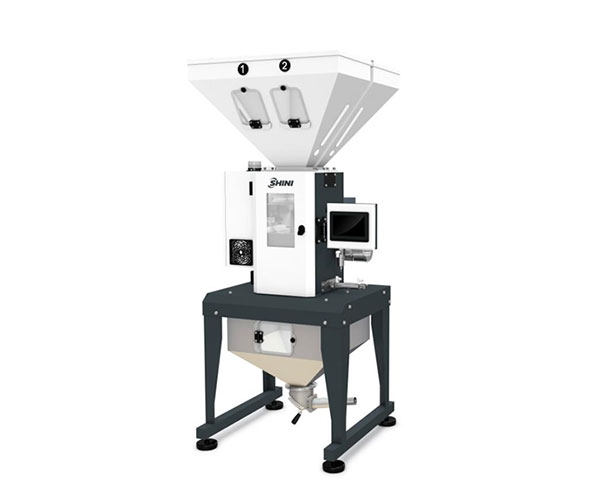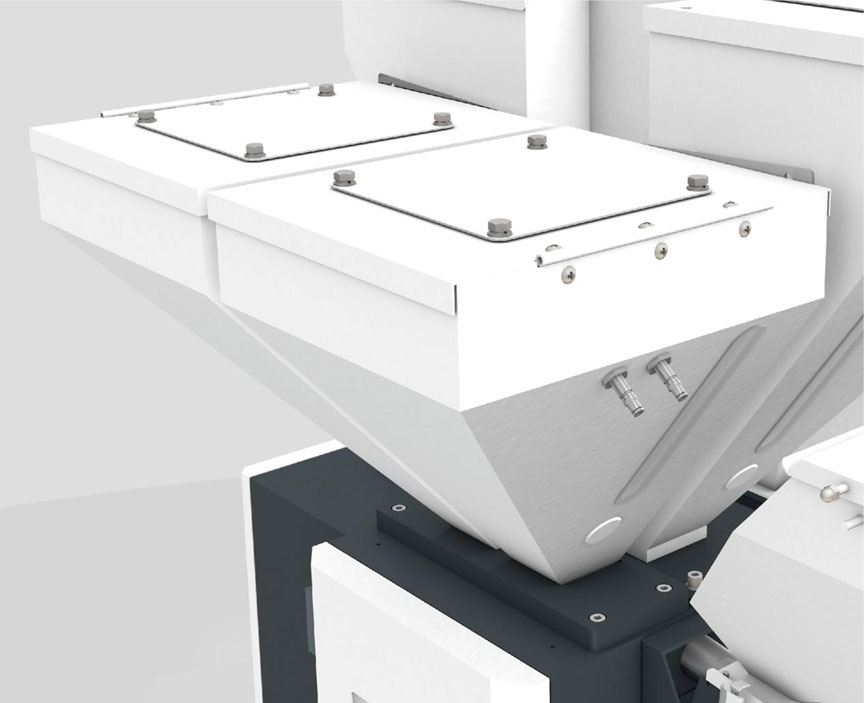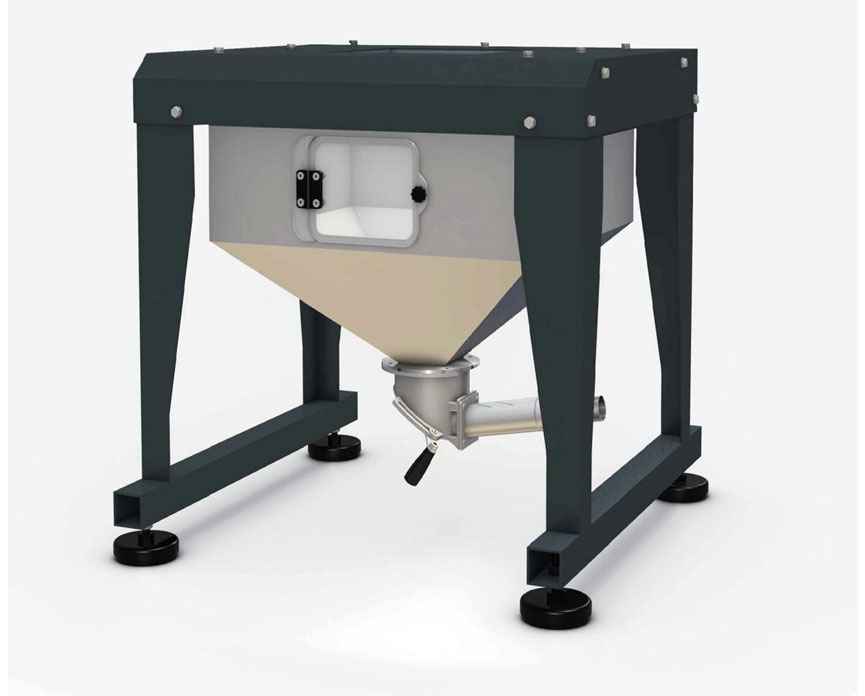Choosing the right blending method is a critical decision for plastic processors aiming to improve quality, reduce waste, and streamline operations. The two primary approaches—batch blending and continuous blending—each offer distinct advantages depending on your production requirements.
In this article, we’ll compare gravimetric batch blenders and continuous blending systems, explore their use cases, and help you determine which solution aligns best with your production goals.
New to gravimetric blending? Check out our comprehensive introduction to What Is Gravimetric Blending? Understanding the Process, Benefits, and Key Applications for a solid foundation before diving into system comparisons.

(Floor-mounted gravimetric blender ideal for standalone or modular setups.)
What Is Batch Blending?
Batch blending involves sequentially weighing and mixing materials in set amounts, or "batches." A gravimetric batch blender uses load cells to accurately measure each ingredient before blending them together in a mixing chamber. This method ensures that every batch follows the exact formulation.
Batch blending is typically found in setups where consistency and traceability are critical, such as in masterbatch production or when working with recycled materials. It’s also commonly integrated with upstream and downstream plastic material handling equipment to form complete processing solutions.

What Is Continuous Blending?
In continuous blending, materials are simultaneously metered and fed into the process in real time. The system maintains an average formulation over time, rather than controlling each individual batch. While it offers speed and simplicity, precision can vary with material fluctuations.
This method is often used in large-volume applications where cost-efficiency and uninterrupted production are top priorities—especially when raw materials have consistent properties.
Gravimetric Batch Blenders: Benefits You Shouldn’t Overlook
When precision and consistency matter most, gravimetric batch blenders provide unmatched control over the blending process:
| Feature | Gravimetric Batch Blenders |
|---|---|
| Dosing Accuracy | Up to ±0.1% |
| Recipe Control | Fixed per batch |
| Material Waste | Reduced due to exact measurement |
| Color Matching | Excellent for masterbatch or additive blends |
| Traceability | Full batch data records |

(Mobile hopper design for easy transport and cleaning in batch production setups.)
When Is Continuous Blending the Better Choice?
While continuous blending systems offer simplicity and speed, they may fall short in applications where precision is critical:
| Feature | Continuous Blenders |
|---|---|
| Dosing Method | Real-time average metering |
| Ideal For | Large-scale operations with uniform recipes |
| Precision | Less accurate in short-term fluctuations |
| Changeover | More complex, longer downtime |
For example, if you're running a high-speed production line producing a single formulation day in and day out, a continuous system might make more sense—especially when paired with consistent-quality regrind prepared by high-performance plastic granulators.

(Modular, tool-free structure allows for rapid disassembly and maintenance.)

(Sturdy floor stand assembly for stable integration into existing lines.)
Conclusion: Speed or Precision—What Matters Most to You?
Both batch and continuous blending systems serve a purpose in modern manufacturing. But if your production demands precise control, better traceability, and batch-to-batch consistency, gravimetric batch blending remains the preferred method.
Want to optimize your material handling workflow from bag unloading to final blending? Explore our guide on the super features and versatile applications of automated bulk bag unloaders, or learn how Shini’s SGB Series Gravimetric Batch Blenders can help you improve quality and reduce waste.
